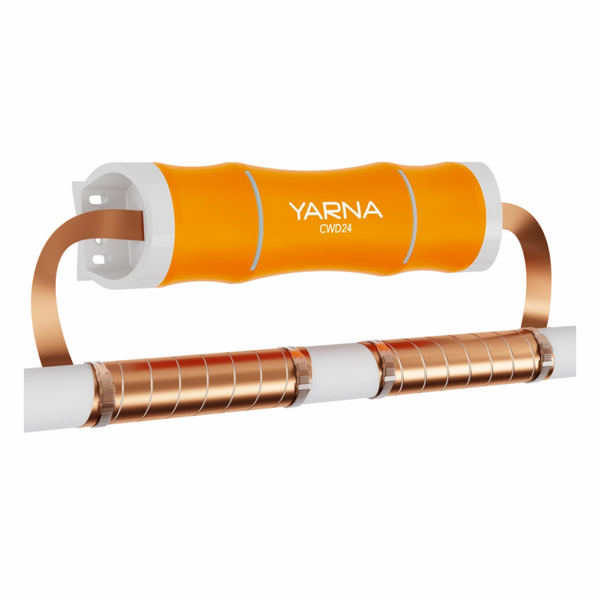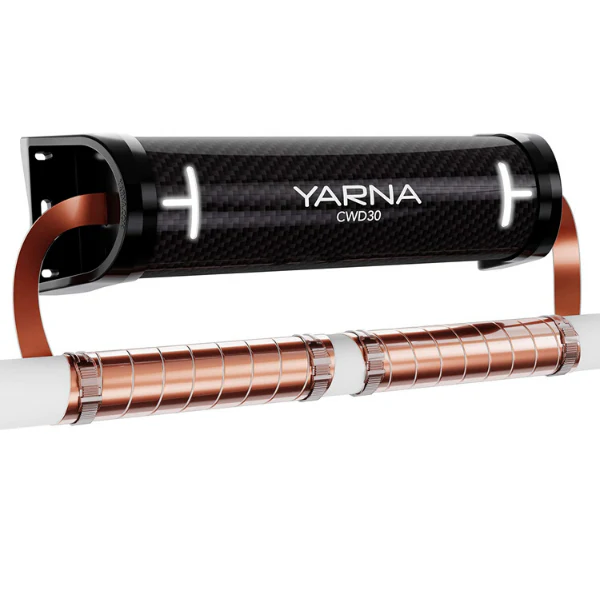What Happens If My Water Softener Runs Out of Salt?
Salt is like a fuel for salt-based water softeners. Similar to vehicles that are powered by gasoline or diesel, water softeners need a constant supply of salt to function. The difference, in this case, is that the salt does not feed the system, but acts as a cleaner for the resin beads during the regeneration cycle.
In a nutshell, water softening would not be possible without the exchange between sodium ions and hard minerals.
The Consequences of Running Out of Salt
Before getting into how a water softener works, you must first understand what exactly happens if it indeed runs out of salt. And for this you need to understand why that salt is important and why it is used in the first place.
Because the salt is used to prepare the brine solution, if your water softener runs out of salt, the first thing that will be affected are the resin beads. These will soon become unable to absorb minerals from hard water, making the entire system useless.
However, the lack of salt will generate other consequences such as the following:
- The water coming out of a water softener that has run out of salt will leave stains on whatever it touches, including your glassware, shower door, faucet, and so on.
- Your brine tank could overflow. If your system has only one shut-off valve, it will not be able to stop the water filling the brine tank once the water softener ran out of salt.
- Usually, the water passing through the control valve is softened. The absence of salt means that the water will no longer be softened, and the control valve will be filled with hard water.
- The water can't be softened without salt. That means hard water will build-up your pipes and cause less efficiency in your water heating system.
To put it another way, you should never let your water softener run out of salt. This mistake is likely to cause permanent damage to the system components and your fixtures and appliances as well.
Ion Exchange Process Explained
Water softeners have been around for about 110 years. Since then, they have endlessly tried to develop the best water softening solutions. One of the most popular is the ion exchange, the process used by salt-based water softeners to remove hardness from water.
A traditional water softener consists of two tanks and a control valve. In the first tank are the resin beads, which exchange ions with minerals in the water. In the second it is prepared the salt brine, used to wash the beads from the first tank once they reach their maximum absorption capacity.
The role of salt here is to create salt brine that washes the mineral deposits off the resin beads. In other words, sodium is detaching the mineral build-up from resin beads, taking away the calcium and magnesium accumulated there.
How Often Do You Need To Replace Salt in Your Water Softener?
Currently, there are certain models of water softeners on the market that display the amount of salt left. With one like this, you won't have to worry about checking the salt level in the brine tank manually. However, if your water softener is not that advanced, you will need to check the amount on your own and add salt every 6-8 weeks.
To check the salt level of your water softener, you need to open the tank brine and look inside. If the salt level is less than half, that's a sign you have to do a refill.
Ideally, the salt must take up about three-quarters of the tank volume. Adding too much salt will prevent the system from regenerating properly.
Can a Water Softener Run Without Salt?
As shown above, a water softener that runs out of salt can be a real hassle for users. However, to avoid such situations, a suitable alternative are the salt-free systems. These water softeners do not use the ion exchange for softening the hard water. This means you will not have to buy bags of salt regularly or to find a place to store them.
There are 3 such water softeners on the market: the basic salt-free water softener, the magnetic water softener, and the osmosis water softener. Each of them offers a different user experience and different ways of softening the water.
The Basic Salt-Free Water Softener
The maintenance of this system is easier without the ion exchange procedure that requires the use of salt. However, this salt-free water softener does not remove minerals from hard water like the salt-based one. Therefore, it changes the chemical composition of these minerals such as calcium and magnesium, so as not to affect the surfaces they encounter.
Pros:
- low maintenance
- sodium is not added to water
- can filter other impurities besides hard minerals
Cons:
- it doesn't really remove the hard minerals, it actually transforms them
- the water will not build up in the pipes, but it will still feel hard when washing
- more expensive than the salt alternative
The Magnetic Water Softener
Quite similar to basic salt-free systems, but different by their method of installation and operation, the magnetic water softeners are the latest on market. These softeners reduce water hardness by draining it through a magnetic field. With such a system, you will enjoy softened water without any good missing minerals.
Pros:
- takes up little space
- affordable
- does not change the water composition
Cons:
- the minerals from hard water are only neutralized, not removed
- doesn’t work without electricity
The Osmosis Water Softener
The reverse osmosis water softeners act more like water filters removing absolutely all substances from the water, adding back good minerals at the end. However, this water softener is usually an under-sink unit that provides soft water for only one faucet.
Pros:
- great water to drink and cook
- dissolves also solids, chlorine, and bacteria
Cons:
- more expensive
- needs regular filter changes
- focus on hardness only
However, if you are looking for a water softener for your home, consider the size of your family as well. To make a quick and easy calculation, multiply the number of people in your home by the gallons/litres of water they use each day.
That number should be multiplied by the grains of hardness in your water to identify how many grains need to be removed each day. Then add this criterion to the list of features that the right water softener for you must have.
Other Salt-Free Alternatives
Not least, we would like to discuss about another suitable salt-free alternative: the water desclaer. What makes a water descaler different from a water softener is the way it is softening hard water. A water descaler is using a magnetic field for charging the water's minerals, reducing the build-up and scale deposits caused by hard water.
Additionally, water descalers won't take up as much space in your home as a traditional two-tank water softener which will probably need a place to store salt as well. Another important thing to mention is that water descaler requires minimal maintenance. No brine solution used for cleaning resin beads means no salt level to frequently check.
Without the bags of salt which you have to buy regularly for a traditional water softener, the costs will be much lower in the long run, and sodium excess will never be an issue for your softened water.
However, to better understand the difference between water softener and descalers, we recommend reading one of our articles that addresses this topic.

Yarna Water Descalers
Next, we will present some examples of water descalers to support all the above statements.
Yarna descalers CWD24, CWD30, or CWD48 requires no salt or chemicals to be effective as hard water scale removers and limescale prevention solution. Traditional water softeners, on the other hand, use salt and chemicals that are discharged into the waste stream and unable to be removed by wastewater treatment facilities.

Our descalers soften hard water with the use of chemical reaction, induced by electricity, with no need of salt and regular refilling to do that. These systems work based on capacitive effect, also known as cathodic protection. It is a method that relies on physics principles to protect metal against corrosion and is essential for metal pipes, ships, and boats that have to stay a long time in the water. It also offers corrosion protection to steel structures buried in the soil.
In other words, Yarna descalers prevent the minerals in your water from adhering to the inside of your plumbing like shower heads, faucet aerators, clothes washer, dishwasher, inside of your water heater, and others. The minerals are supposed to simply pass through the system and down the drain.
If so far we have demonstrated that low maintenance and efficiency are their fundamental characteristics, in terms of installation, you will enjoy a lot of versatility. Yarna descalers can work with any pipe type up to 1” thick: iron, copper, stainless steel, plastic, and they are easy to install without any moving parts.

To Summarize
If your water softener runs out of salt, not only its components will be affected, but also the pipe system in your home, the appliances, and fixtures due to hard water that could not be softened. To avoid this, it is recommended to regularly check the salt level in the water softener tank if it doesn't provide this information on its own.
However, you will never encounter this situation if you choose a salt-free alternative. Depending on your needs and the water consumption in your home, you may want to consider a basic salt-free water softener, a magnetic water softener, a RO system, or one of our descalers, which will save you from constantly checking the salt level.




